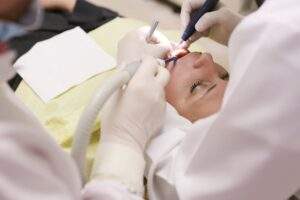8 Knee Replacement Exercises Before and After Surgery

Are you preparing for knee surgery?
Studies show that over one in four American adults suffers from chronic knee pain. This could result from a variety of things, such as age or a previous injury. Many patients who suffer from chronic knee pain turn to surgical treatment.
Are you a candidate for knee surgery? To get the best results, you need to do the proper before and aftercare for your knee. This includes doing the right exercises.
Looking for the best knee replacement exercise? Here are eight simple exercises you need to do before and after a hip or knee replacement surgery. Check out these easy exercises to boost your recovery!
Before Knee Surgery
Doing knee replacement exercises can help you improve your flexibility and build strength. Knee replacement exercises before surgery may even help you recover faster.
Here are eight exercises that can help you prepare for your surgery. Ensure to consult your physical therapist before trying anything new in your regimen.
1. Clamshells
Clamshells are great if you’ve had a hip replacement surgery. This exercise helps you work with your abductors and external rotators. This will help you in balancing and early ambulation after your surgery.
To do this, lie on one side and point your bad knee to the ceiling. Keep your heels together alternate opening and closing your legs. You may do three sets of this with five to 20 repetitions.
2. Stomach Kickbacks
This exercise targets your glutes and hamstrings. These muscles help you get in and out of cars and sit down on chairs.
Start by lying down on your stomach and straightening both legs. Flex your bad leg toward the ceiling and hold it for a few seconds. Lower your leg and do three sets of five to 20 reps.
3. Walking
Walking is a great and simple exercise to do when you’re preparing for surgery. You can do this before and after any strengthening exercise. It’s low impact and encourages you to get out of the house.
Walking can also help you shed some weight before your surgery. This can reduce complications and quicken your recovery.
4. Knee Bending
This exercise promotes your range of motion before your surgery. Start by sitting on a chair and bending your knee as far back as you can. Hold it for a few seconds before returning to your resting position.
5. Side-Lying Straight Leg Raise
This exercise helps you build your hip abductor muscles. You may find this at the side of your buttocks. These muscles are crucial to your stability while walking and standing.
While lying on your side, lift your leg towards the ceiling. Lower then repeat 3 sets of 10. Then, lie on your back and flatten your injured leg against the floor or bed.
Bend your other leg, then raise the straightened one about a foot high. Hold it for a few seconds before lowering it.
6. Straight Leg Raise
This exercise helps you build your quadriceps and hip flexors. Start by lying on your back while bending your good knee. Flex your injured leg and lift it to the height of your other knee.
7. Sitting Kicks
Start by sitting on a chair then raising and straightening your leg. Hold this for five seconds before lowering. This promotes your range of motion.
8. Chair Pushups
After surgery, you’re most likely to need a cane or walker. Chair pushups will help you strengthen your triceps. It will prepare you for the initial recovery.
Use a chair with arms for this exercise. While sitting on the chair, place your hands on its arms and push yourself upwards. Lower yourself and repeat this several times.
After Knee Surgery Exercises
Doing the proper exercises will help you recover your strength and range of motion. Your physical therapist may tell you to repeat some of the exercises listed above. Here are other exercises that can help you recover after a knee replacement surgery.
After your surgery, your leg may feel more tender or painful. Check out Eliquis prices in this online pharmacy if you’re looking for something to help relieve the pain.
1. Elliptical Machine and Stationary Bike
Experts state that these cardiovascular exercises can help strengthen your quadriceps. These are non-impact exercises and are safe for your knees as compared to running.
2. Knee Push-Down
To strengthen your quads, lie down on your back and place a rolled-up towel under your ankles. Tighten your thigh muscles and press your knees towards the floor. This also helps you improve your motion range and knee extension.
3. Heel Slides
Your knee is likely to get stiff after you undergo a knee replacement surgery. This exercise helps you to counteract that and to increase your range of motion. Start on your back with your good leg straightened in front of you.
Bend your knee and slide your heel towards your buttocks. When you feel pain in that area, stop but hold it for a few seconds.
4. Gluteal Sets
Lie on your back and bend your knees. Squeeze your buttocks muscles and hold it for five seconds. Relax your muscles, then repeat the exercises 10 times.
5. Walking
Walking throughout the day, even when on a cane or device, can help you recover faster. You may try the heel-to-toe pattern to prevent walking with a limp. Start with small distances, then increase it as you get your strength back.
6. Ankle Pumps and Circles
This is a great exercise for when you’re fresh out of the hospital. Your knee may become swollen and painful if you force yourself to do too much activity.
While lying down and resting, flex your foot towards you, then push it down. You may also rotate it clockwise and counterclockwise.
7. Leg Slides
While lying down on your back, slide your surgical leg outward. Keep your kneecap pointed upward as you pull it back towards you. You may place a plastic bag under your foot to make this exercise easier.
8. Thigh Squeeze
While lying down on the floor or bed, tighten the muscles on your surgical thigh. This motion will push your knee down onto the floor or bed. Hold this position for five seconds before relaxing.
Eight Knee Replacement Exercises to Do for Surgery
Now you know some great knee replacement exercises to boost your recovery. These exercises will help you recover your strength and range of motion.
Thanks for reading our article! Want to learn more about caring for a surgical leg? Check out our other guides to find more great tips for a fast recovery.





